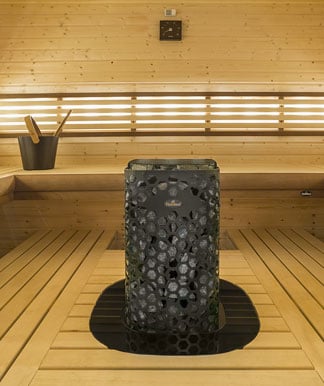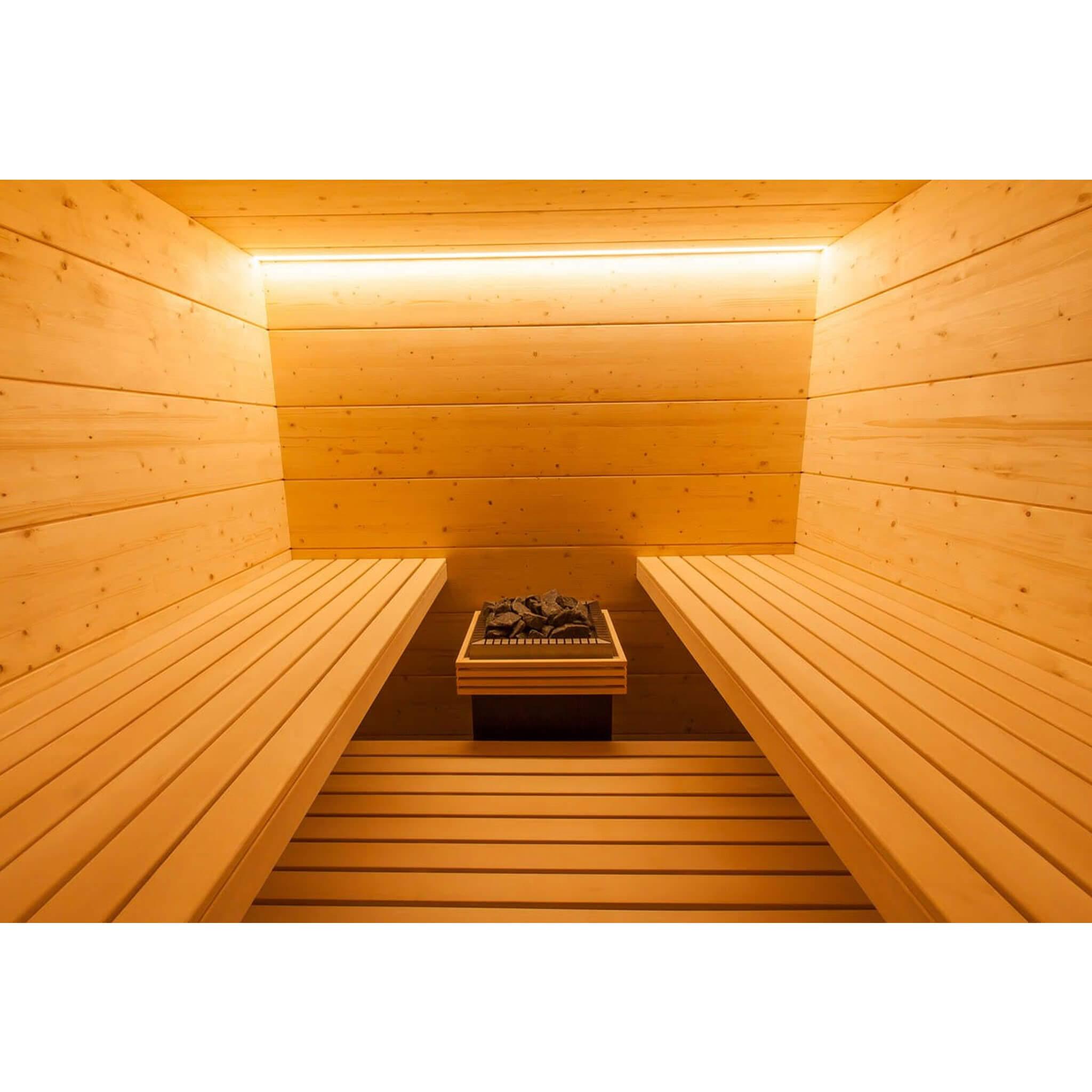The smart Trick of Traditional Sauna That Nobody is Talking About
The smart Trick of Traditional Sauna That Nobody is Talking About
Blog Article
What Does Traditional Sauna Do?
Table of ContentsThe Buzz on Traditional SaunaThe Facts About Traditional Sauna UncoveredSome Ideas on Traditional Sauna You Should KnowSome Of Traditional Sauna
Most of the weight lost in a sauna is water loss and is re-gained upon rehydrating. Without a question sauna can be a vital component of a healthy weight loss program. To look at the distinctions in between standard and IR saunas, I will certainly divide these right into verifiable, theoretical, and fabricated distinctions.Therefore, the most popular factor in the saunawhich is at the ceiling directly over the sauna heateris usually in between 185 and 190 F. Traditional Sauna. Claims that a traditional sauna exceeds 200 F is simply not real and not suitable for electric saunas sold in the US. The temperature level for a far-infrared sauna is usually established between 120 and 140 F; nevertheless, unlike the traditional sauna, the goal in and IR area is not to achieve a heat
Due to this, the temperature difference is nearly irrelevant, since profuse sweating leads to both sauna kinds, however the method of heating up the body is different. In an IR sauna the bather will feel warm and will certainly sweat profusely, however at much lower temperatures. Therefore, if the objective is to spend longer durations of time in the sauna, the IR sauna is a good selection.

Our Traditional Sauna Statements
When the high temperature is accomplished, the elements cycle on and off to keep the heat. Most conventional sauna individuals take pleasure in pouring water over the rocks to develop heavy steam to raise sauna moisture levels. The advantages of putting water over the rocks include: making the space much more comfy, dampening the nasal flows, and allowing the use of aromatherapy by blending crucial oils with the water.
In a far-infrared sauna, the warm waves permeate the body to efficiently warm the body and raise the body core temperature. To accomplish this boosted temperature level, Far-infrared emitters produce infrared energy which is close to the same wavelength as that which the body naturally emitsoften described as the "Vital Range" of 7 to 14 microns), so the energy is well gotten by the body.
When the energy enters the body, it causes the body temperature level to boost and inevitably causes sweating. In an infrared sauna it's essential for the emitters/heaters to stay on nearly constantly. Given that there is no mass of rocks to retain warmth, the sauna will certainly cool if the emitters turned off.
As pointed out over, the sauna bather in an infrared space wants to place himself before running emitters to get optimal take advantage of the top article heat. The home heating time for both spaces can be very different, relying on how the areas are used. For a typical sauna, a bather should allow 30-40 mins for the area to accomplish a desired temperature level and to properly pre-heat the rocks.
The Basic Principles Of Traditional Sauna
A well constructed sauna will generally attain a temperature level of 150-160 F in concerning 30-40 minutes. For hotter temperatures, the space may need to warmth for a longer period.
To some, 15 minutes was "lost" while the infrared energy heated up the timber panels as opposed to heating up a body, while others find a pre-heated room to be much more comfortable and think an elevated starting temperature level is essential to start perspiring. The length of advised usage for each and every area is more helpful hints about the exact same (10-15 mins per session); nonetheless, because of the lower air temperatures and the ability to really feel the effects of infrared warm faster than a conventional sauna, it is not uncommon for a person to invest a total of 20-30 minutes in an infrared sauna.
Typical saunas have a tendency to be bigger (thus utilize even more electrical power) than infrared saunas, although typical saunas are certainly offered in one and two person sizes as well. For a two-person conventional sauna, 5x6 or 5x7 size is most popular. The top bench can pleasantly seat 2 or three people and is also long sufficient to lie down throughout the sauna session.


The average price per kWH of electrical power in the U.S. is around $0.11, so a 4.5 kW heater will set you back approximately $.50 to run for one hour, if the heating unit runs constantly for one hour. Usually a sauna heating system will compete 75% of the initial hour and 50% of subsequent hours on given that the components cycle once the established temperature level is attained.
More About Traditional Sauna
A 2 individual far-infrared room is typically literally smaller sized than a conventional sauna, often regarding 4' x 4' or smaller sized. The IR heater is normally 1.5-1.7 kW utilizing a 120 volt 15 amp plug-in service. Given that the area can be used sooner than a sauna area, we will assume the area is made use of for to of an hour including warm view up time.
Ultimately, there is a rarely reviewed difference in the social experience between the 2 rooms. While our culture has actually lost several of the social advantage of the traditional sauna experience, it can be very socially satisfying. From family members time in the sauna, to heart-felt discussions with loved ones, to sauna partiesthe traditional sauna experience can result in intimate mingling.
A lot of higher end infrared spaces include colored light treatment, audio systems and full-glass fronts. The dimension of a lot of spaces enable 2 people to comfortably use the space, while some designs may enable a 3rd or fourth person to make use of the space. Customized infrared areas are likewise offered, with room sizes readily available approximately 7' x 8' x 7' high.
Report this page